
Our nation’s first interstate, the National Road, traversed through Maryland, Pennsylvania, West Virginia, Ohio, Indiana, and Illinois. It was the United States’ first fully paved highway, funded and built by the Federal government. Providing a connection between the Potomac and Ohio Rivers, it initially stretched a distance of approximately 620 miles.
Known today as US Highway 40, it was built as a toll road, and charged fees to travelers who wished to use it. Not unlike today’s turnpikes, travelers paid tolls in advance, prior to embarking on their journey. Toll amounts were based on total distance traveled, based on which exit travelers planned to disembark from the road.
The project started in 1811 at Cumberland, Maryland, at the headwaters of the Potomac River. Heading west, construction traversed the Allegheny Mountains, crossed through Pennsylvania, and continued onward where it reached the Ohio River by 1818, at Wheeling, West Virginia*.
From Wheeling westward, construction continued, snaking through Ohio, Indiana, and terminating at Vandalia, Illinois, where the project finally stopped. Originally planned to stretch even further westward, funding for the project evaporated during the Hard Times Era of the 1830s.
The Wheeling West Virginia Suspension Bridge
In the late 1840s, construction began for a suspension bridge at Wheeling, which spanned the Ohio River. Until that time, the National Road was not contiguous, as no reliable crossing existed over the Ohio River.

Completed in 1849, the bridge was the longest suspension span in the world. Having thus become a part of the National Road, a toll gate was established that corresponded with the bridge.
A Short Discussion About Attribution Discrepancy
Like other gates along the National Road, travelers who wished to cross the bridge at Wheeling were charged a toll and issued a token. Struck on planed large cents and foreign coins, the blanked tokens were counterstamped with various numerical markings.
There exists a discrepancy as to whether these tokens were issued specifically for tolled exits along the entirety of the National Road, or whether they were specifically struck for crossing the Wheeling Wire Suspension Bridge in Wheeling, West Virginia. The Atwood-Coffee Catalogue of Transportation tokens asserts the latter, while Brunk’s Counterstamped book asserts the former.
Given the number of issued numerical varieties, I posit that it makes more sense that they were issued for tolled exits along the entirety of the National Road. If they were struck solely for crossing the Wheeling Wire Suspension Bridge, it is confounding as to why there would be various numerical strikes in consecutive sequences of 5.
Table of Varieties
The following table lists all known National Road emissions, pursuant to Brunk and correlated with the Atwood-Coffee Catalogue. Rarity Ratings are sourced from Brunk. It should be noted that specimens exist in both “EAST” and “WEST” strikes with and without periods. Neither Brunk nor Atwood-Coffee makes a distinction.

Numismatic Specimens
The following specimens originate from my cabinet and have taken considerable time to accumulate.
The first specimen is counterstruck as “THROUGH / 5 / WEST.” Listed in the Atwood-Coffee Catalog as WV890D, it is attributed to the Wheeling Wire Suspension Bridge in Wheeling, West Virginia. However, listed in Brunk as T-251, it is attributed to the National Toll Road. Brunk lists 2 known as extant, thus giving it a rarity rating of R-8.

The second specimen is counterstruck as “THROUGH / 15 / WEST.” Listed in the Atwood-Coffee Catalog as WV890J, it is attributed to the Wheeling Wire Suspension Bridge in Wheeling, West Virginia. However, listed in Brunk as T-256, it is attributed to the National Toll Road. Brunk lists 3 known as extant, thus giving it a rarity rating of R-8.

The third specimen is counterstruck as “THROUGH / 20 / WEST” Listed in the Atwood-Coffee Catalog as WV890L, it is attributed to the Wheeling Wire Suspension Bridge in Wheeling, West Virginia. However, listed in Brunk as T-258, it is attributed to the National Toll Road. Brunk lists 4 known as extant, thus giving it a rarity rating of R-7.

The fourth specimen is counterstruck as “THROUGH / 30 / EAST.” Listed in the Atwood-Coffee Catalog as WV890T, it is attributed to the Wheeling Wire Suspension Bridge in Wheeling, West Virginia. However, listed in Brunk as T-261, it is attributed to the National Toll Road. Brunk lists 1 known as extant, thus giving it a rarity rating of R-9.

The fifth specimen is counterstruck as “THROUGH / 35 / EAST.” Listed in the Atwood-Coffee Catalog as WV890O, it is attributed to the Wheeling Wire Suspension Bridge in Wheeling, West Virginia. However, listed in Brunk as T-264, it is attributed to the National Toll Road. Brunk lists 1 known as extant, thus giving it a rarity rating of R-9.

In addition to tokens, paper scrip was also issued for use on the National Road. Redeemable for fare or cash, travelers could use the notes for stage coach service.
The specimen below was emitted by the Good Intent Stage Co. Based out of Baltimore, their notes were payable at Wheeling or Cumberland. This particular variety was redeemable in Cumberland, and hails from the Eric Schena Collection.
Listed as Jones/Littlefield PW20-41 and Shank 50.84.5, the note is R-6 in rarity. Despite possessing damage, the specimen survives as a beautiful example.
Aaron Packard ![]()
Notes and Sources
- The Cabinet of Eric Schena, Numismatist
-
Merchant and Privately Countermarked Coins, 2nd Edition, Gregory G. Brunk, World Exonumia Press, ©2003
-
The Atwood-Coffee Catalogue, John M. Coffee and Harold V. Ford, American Vectorist Association (AVA)
- Standard Catalog of United States Tokens 1700-1900 Fourth Edition, Russell Rulau, Krause Publications, ©2004, pg. 108
- The Library of Congress Digital Archives
- New York’s Crystal Palace & The H.B. West Tokens - November 6, 2019
- Edward Aschermann’s Cigar & Tobacco Tokens - November 2, 2019
- George T. Hussey & His Special Message Tokens - October 30, 2019


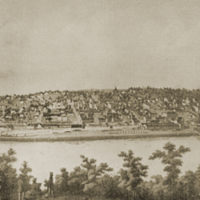
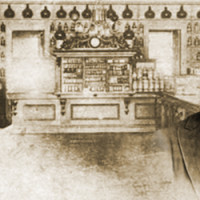
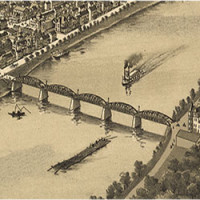
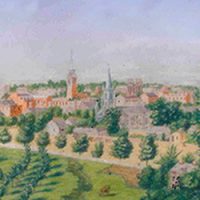
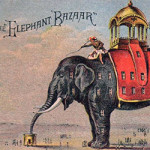
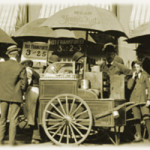
Hello…I live in Ross,Ohio and a few years back my brother found some old tokens in a house that was being torn down in Hamilton.I was looking some of them up on google and one of them this site popped up.It is the through 20 East toll token.please reply back to let me know some more info on it and it’s value. Thank you so much
Brandy Estes
Hi Brandy –
Please contact me at my email address listed in the ‘Contact’ section.
Please also include photographs of both sides (obverse and reverse.)
Thank you,
A. Packard
I have five of these tokens as Wheeling is my hometown and I love my local history. One being a variety not listed on the resources you listed in the article. Please get in contact with me as I have some questions I hope you could answer. Thanks
Chris Snyder
Hi Chris –
Please feel free to email me at the ‘contact’ page with the questions that you have, and I’d be happy to try and answer them for you.
Kind regards,
A. Packard
Hello Mr. Packard~ I have an Estate Sale service in
Oklahoma. I am currently researching tokens for a client
and found your site. I have been assigned to sell quite a
large coin collection which also contains tokens~ I came
across 2 tokens which say THROUGH 15 WEST and
THROUGH 40 (over stamped 30) WEST. The 15 token
has been drilled on the edge~ The have great patina
and look like your above example with 20 in center. Any
information is appreciated!
Thank You!
Gretta
Mr. Packard,
Thank you for your excellent article. I am a metal detectorist and recently found one of these tokens. I initially had no idea what it was until someone referred me to your article. Mine says “THROUGH 40 EAST”. Can you provide any more information on this token, or refer me to books etc. Thanks!
Hi James –
I believe I was the person who referred you to this article, as if I’m not mistaken you had posted photos of your find in Facebook. If indeed that was you, I believe I may have provided as much information as I could, at the time.
Kind regards,
A. Packard
Mr. Kolodziej,
Congratulations on the awesome metal detecting find as i am a detectorist myself unfortunely, I no longer live in the area where I was raised that is surrounded by history. May I ask the general location/area where you found this token? I am an avid collector of my local history, I grew up in Wheeling, and have spent many years now trying to build a collection of these very tokens. If at anytime you feel you would be willing to part ways with your find please contact me as I would love to add it to my collection and if not i completely understand. I look forward to your reply, good luck and happy hunting Sir.
Chris Snyder